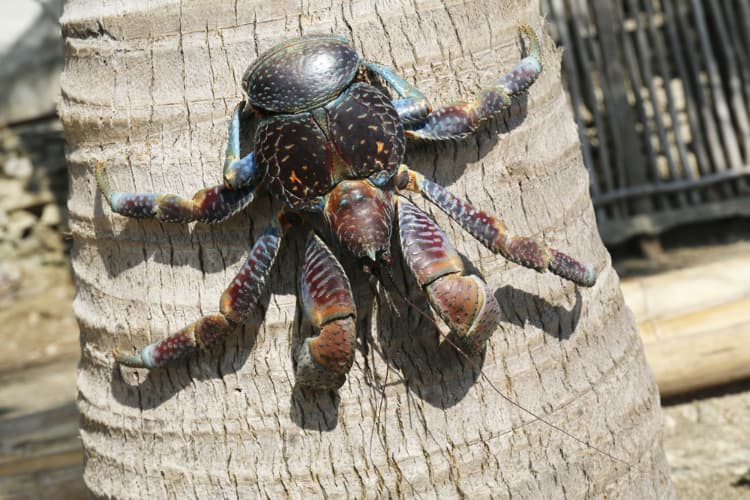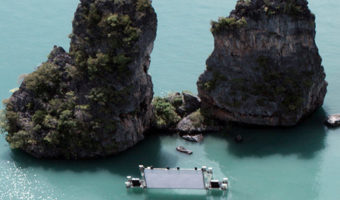Meet the World’s Most Giant Arthropod Land Dwellers – Coconut Crabs
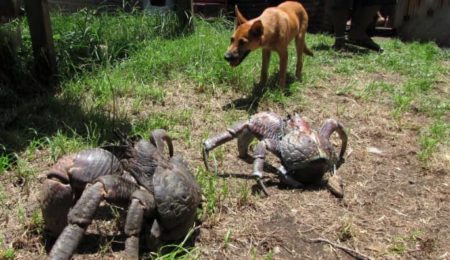
Typically, when you think about crabs, you would picture the tiny, adorable ones that wander around in the seashore. Well, they are sand crabs or mole crabs. But what if we told you that there are massive crabs called “coconut crabs”? Coconut crab, a type of hermit crab, is worth discovering. They have piqued curiosity among humans owing to their enormous size and exceptional strength. The coconut crab is the largest land-dwelling arthropod!
We will look at the different characteristics that make coconut crabs unique, ranging from their incredible size to their eating habits. Are you ready?
Table of Contents
What are Coconut Crabs?
The coconut crab (Birgus latro), commonly called the “robber crab,” is a gigantic nocturnal land crab. As it is a member of the decapod crustaceans, it is closely related to the hermit and king crabs.
When coconut crabs turn five, they become sexually ready and mate from May to September. Female coconut crabs scatter their eggs into the water, where the larvae hatch and spend the next four to six weeks floating to new areas on logs, coconuts, or other rafts. After passing through this stage, they transform into glaucothoe, which resemble shrimp, and dive to the seafloor in search of an appropriate snail shell for refuge. Then, they go to the beach and live at the high-tide line for about four weeks before becoming juvenile crabs.
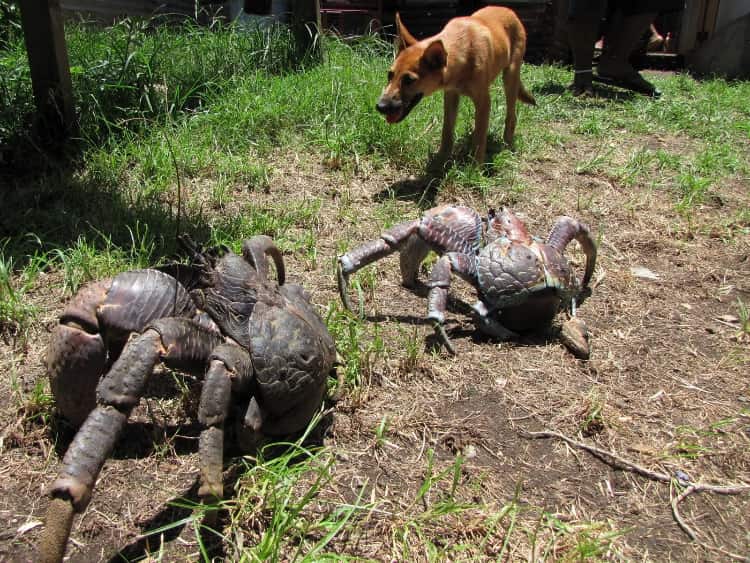
Coconut crabs have earned the Guinness World Record for the largest land-dwelling arthropod. Even though they only live on land, coconut crabs have visual and sensory abilities similar to those of marine crustaceans, and up to 40% of their brain is devoted to the sense of smell. Their sense of smell is their secret weapon. When the crabs hunt at night, the scent of fruits, nuts, or tiny animals draws them to their prey like a magnet.
Exploring the Physical Traits of Coconut Crabs
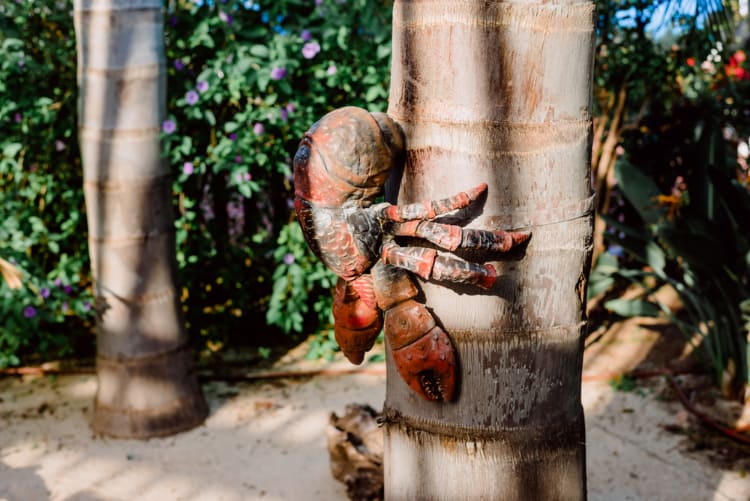
Coconut crabs have several physical characteristics contributing to their “stands out from the crowd†appearance and survival on land. Let us look at the most striking ones:
- Color: Coconut crabs can be seen in a range of colors, including brown, black, and purple tones. Although juveniles and young adults often have a brown color with black stripes running along their legs, adult crabs may vary in color from pale violet to dark brown or deep purple.
- Skin type: Coconut crabs, just like any other crustaceans, have an exoskeleton that acts as their protective outer shell. The exoskeleton supports, protects, and connects muscles.
- Lifespan: Coconut crabs can stay alive for up to 60 years in the wild. That is incredible, isn’t it?
- Leg span: The length of a coconut crab’s legs can vary from 3 to 3.3 feet (0.9 to 1 meter). The average adult coconut crab stands out among other land-dwelling crustaceans because it is huge, measuring around 1 meter from claw to claw.
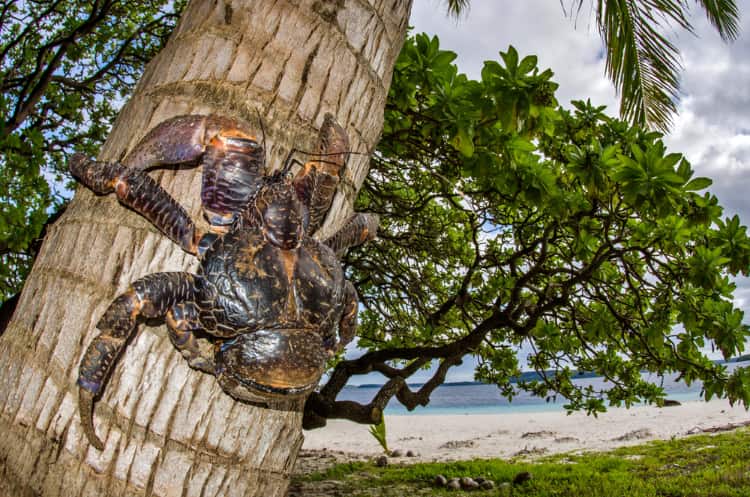
For exciting research, 29 coconut crabs were captured on the Japanese island of Okinawa. The crabs snatched hold of steel force sensors during the experiments. The findings showed a wide range of pinching forces among the examined crabs, ranging from 29.4 to 1765.2 newtons. To give you a better understanding, a human can typically bite with a force of little more than 340 newtons. With its claw, a 4-kg coconut crab could exert an incredible 3,300 newtons of force. Can you comprehend the strength of these behemoths?
This is a coconut crab. If you aren't scared by it's size note that it can crush a coconut in it's pincers pic.twitter.com/yIyKOU0WZN
— Austin (@WritingMyLife91) August 22, 2013
“The force is remarkably strong,” stated study author Shin-ichiro Oka, a zoological researcher at Japan’s Okinawa Churashima Research Centre, in an email.
Natural Habitat of Coconut Crabs
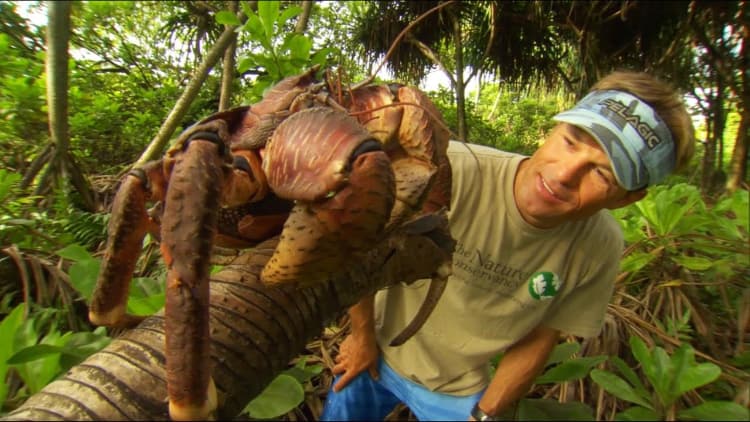
Coconut crabs are typically found in coastal habitats on oceanic islands or small islets close to larger continental islands, up to six kilometers from the coast. You can usually spot them in the tropical western Indo-Pacific Ocean, near the beaches of marine islands such as Madagascar, Seychelles, and Easter Island. You can also find them on islands close to American Samoa’s National Marine Sanctuary.
Coconut crabs use burrows in the substrate as their refuge and food storage space. The burrows act as safety from predators and a place to securely store food for later use. They dig as deeply as possible while molting, a process in which they lose their exoskeleton to create a larger one. Although their juveniles flourish in the water, adults spend most of their time on land. However, they might occasionally get into the water as well.
What Are the Feeding Habits of Coconut Crabs?
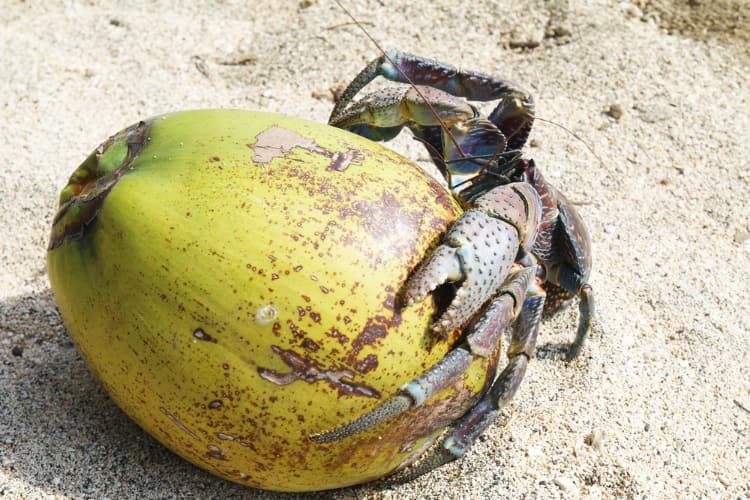
Coconut crabs eat fallen fruit, carrion, other types of food, and the calcium-rich shells of other crabs. Here are some examples of what they could eat: Ochrosia ackeringae, Lister’s palm, Pandanus elatus, candlenut, coconut (the favorite food of coconut crabs), and custard apples. They also eat other organic matter since they are opportunistic feeders. They might consume young tortoises, rats, dead animals, and different crab species like Discoplax hirtipes and Christmas Island red crabs. They have even been seen eating birds like the red-footed booby. These massive creatures frequently engage in territorial behavior when feeding, trying to steal from one another, and pulling their food into their burrows for protection.
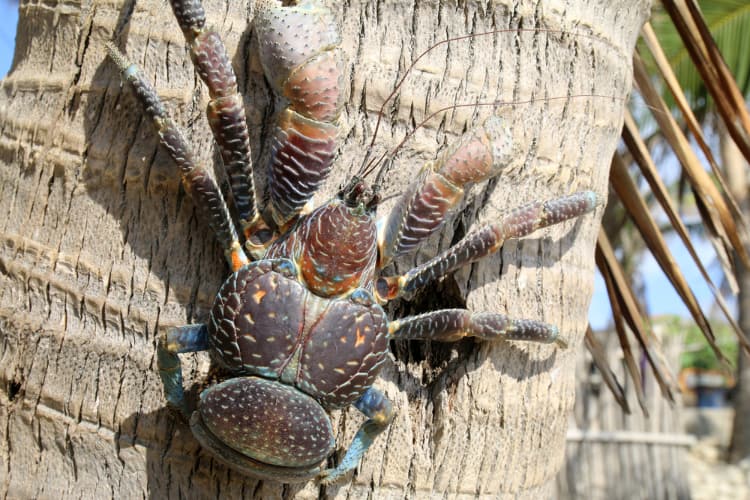
Now the real question! What is the deal with coconut crabs and coconuts? Well, let us break it down for you. Coconut crabs are known to climb trees to access the coconuts. Contrary to popular belief, they do not intentionally cut coconuts from trees. Instead, they accidentally drop them while attempting to open them on the tree. They are famous for their incredible skill in using their massive chelae pincers to crack open coconuts and eat what’s inside – the white meat. You see, the crabs have perfected the art of opening coconuts. The eating behaviors and adaptability of the coconut crab exhibit their extraordinary capacity to take advantage of numerous food sources. It also proves their ability to overcome the challenges of accessing and ingesting various forms of organic matter.
Are Coconut Crabs Going Extinct?
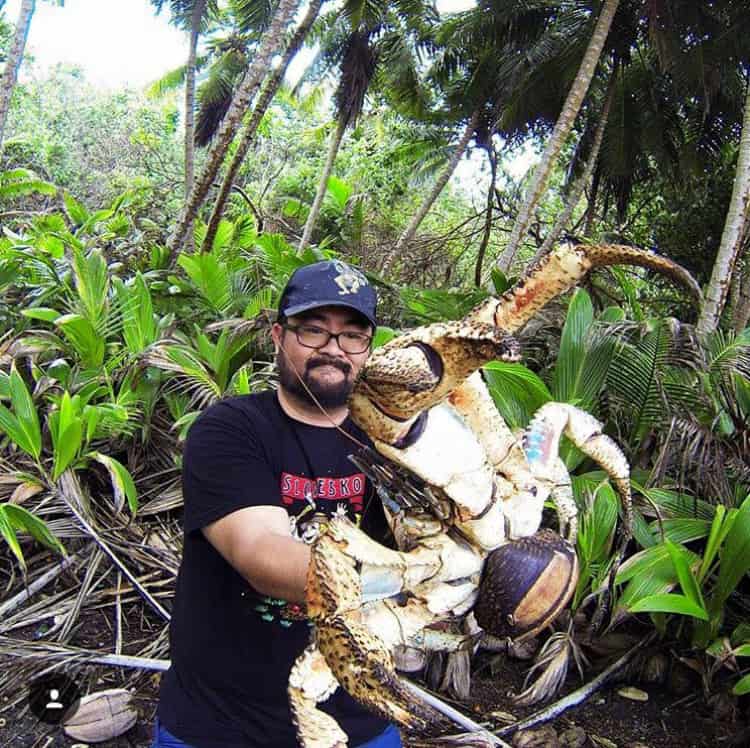
In 2018, the International Union for Conservation of Nature (IUCN) updated its assessment of coconut crabs to “vulnerable,” indicating their increased risk of endangerment. They are endangered due to coastal development and agriculture. Sadly, they are a target of the seafood trade too. The harvesting of coconut crabs has contributed to population decline and disrupted their reproductive patterns, with a preference for larger males affecting breeding dynamics.
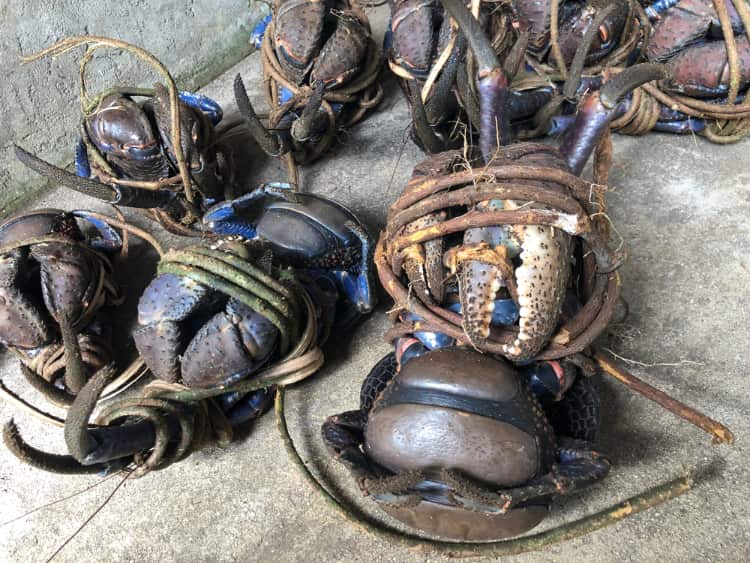
Initiatives are being developed in places like Indonesia’s West Papua Province to inform locals, travel agencies, tour guides, and tourists about the value of preserving them. Some conservation management methods, such as size limits and bans on capturing egg-bearing females, have been implemented at specific locations.














